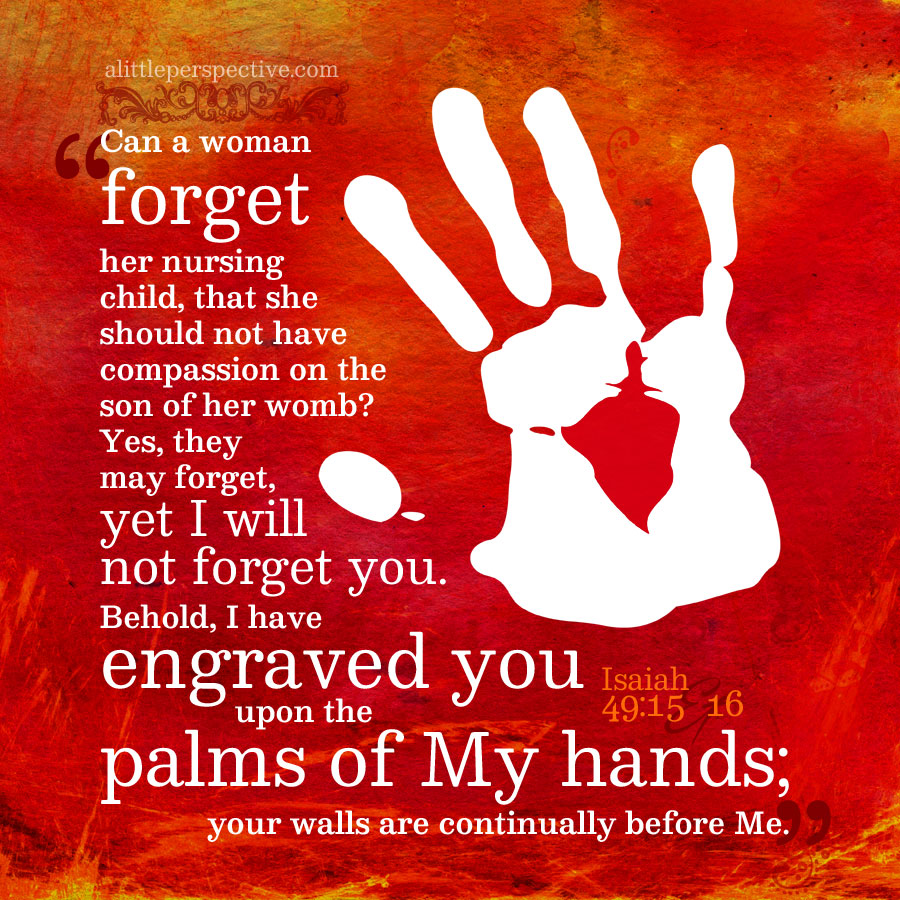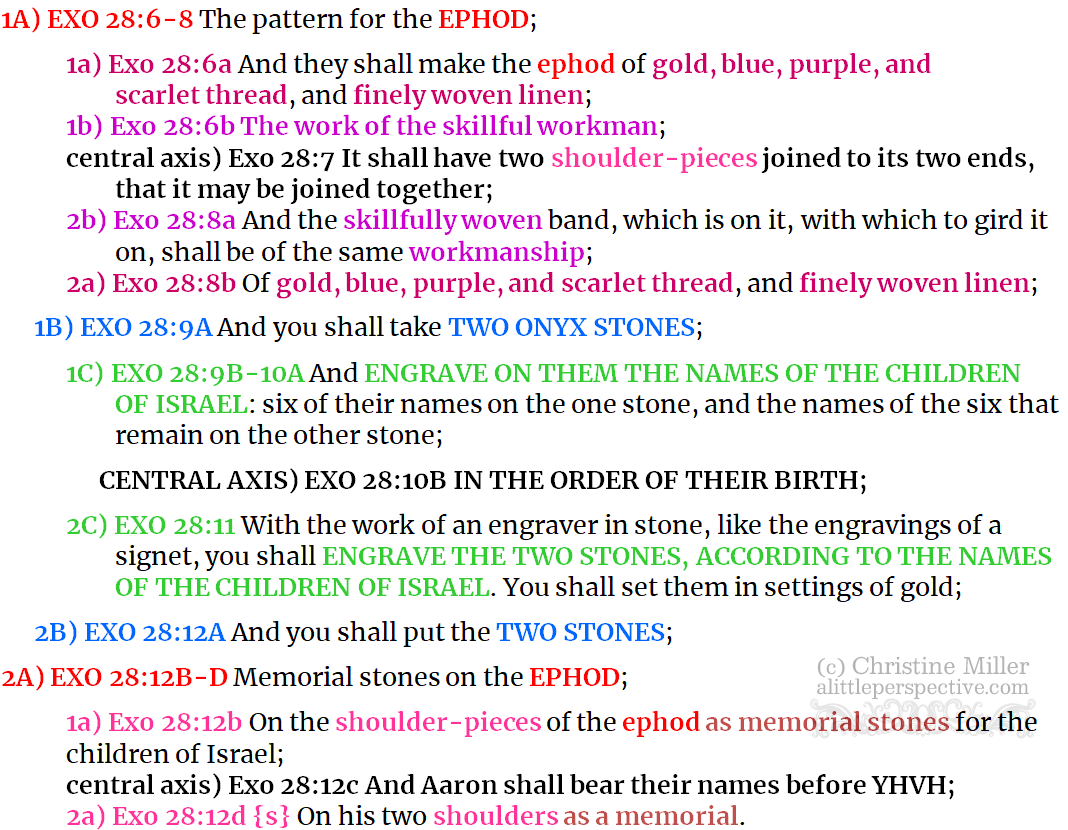Read Exodus 28:6-12 at Bible Gateway.
Hebrew root words
ephod: Strong’s H646 אפד ephod, a concrete noun meaning, “priest’s vestment;” of possible foreign derivation, without a primitive verbal root. According to Gesenius, the 3-letter root of the noun is aleph + pey + dalet.
aleph א = the ox head, thus strength, power, leader
pey פ, ף = the mouth, thus open, blow, scatter, edge
dalet ד = the door, thus enter, move, hang
The story: Powerful (aleph) redemption; i.e. an opened (pey) door (dalet). When one is redeemed from slavery, the door is opened so that he can leave. The Ancient Hebrew Lexicon adds, “to bring back to an original state.”
The ephod is a garment unique to the priesthood. It served as a background for the remembrance stones to be borne before YHVH, two on the shoulders and twelve on the breastpiece. But the story of the ephod is a puzzle: powerful redemption? How is a vestment linked to powerful redemption?
Can a woman forget her nursing child, that she should not have compassion on the son of her womb? Yes, they may forget, yet will I not forget you. Behold, I have engraved you upon the palms of My hands; your walls are continually before Me. Isa 49:15-16
Engraved, so as to be kept in remembrance, or not forgotten, before YHVH.
chiastic structure
Why is the central axis of this parsha that the names of the children of Israel are to be engraved in the order of their birth? Because, the name of Judah would be on the one stone, and the name of Joseph on the other stone, if they were engraved in order. The Scripture is throwing a spotlight on the two witnesses!


















Leave a Reply